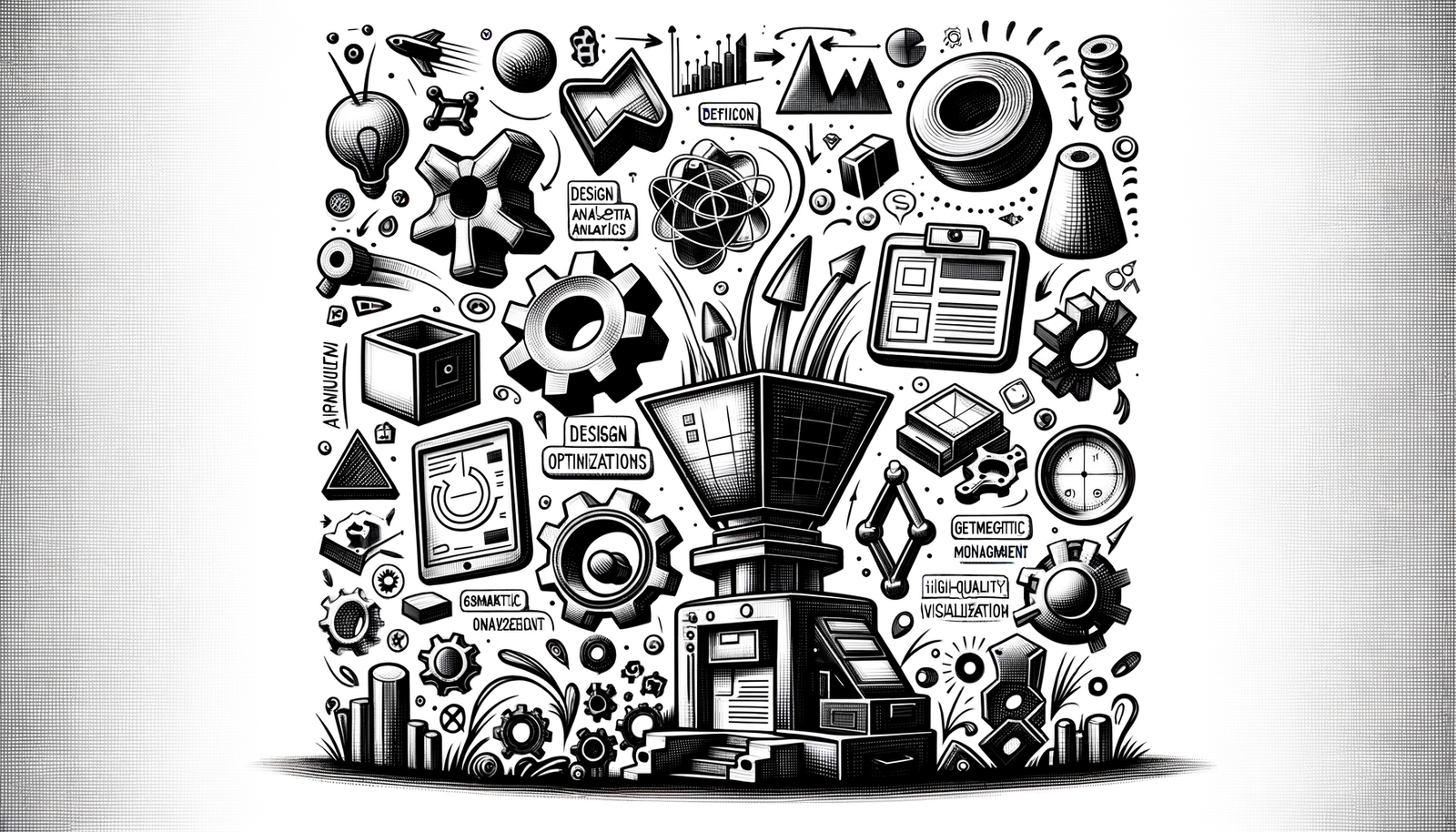Your Cart is Empty
Customer Testimonials
-
"Great customer service. The folks at Novedge were super helpful in navigating a somewhat complicated order including software upgrades and serial numbers in various stages of inactivity. They were friendly and helpful throughout the process.."
Ruben Ruckmark
"Quick & very helpful. We have been using Novedge for years and are very happy with their quick service when we need to make a purchase and excellent support resolving any issues."
Will Woodson
"Scott is the best. He reminds me about subscriptions dates, guides me in the correct direction for updates. He always responds promptly to me. He is literally the reason I continue to work with Novedge and will do so in the future."
Edward Mchugh
"Calvin Lok is “the man”. After my purchase of Sketchup 2021, he called me and provided step-by-step instructions to ease me through difficulties I was having with the setup of my new software."
Mike Borzage
Top 5 PTC Creo Features Elevating Industrial Design Processes
July 03, 2024 2 min read


In the realm of industrial design, the tools and software utilized can significantly influence the creative process and final outcome of projects. PTC Creo, a powerhouse in computer-aided design (CAD) software, offers an extensive suite of features tailored to assist designers in navigating the complexities of product development. Recognizing and harnessing specific functionalities within Creo can transform how designers approach, execute, and refine their work, pushing the boundaries of innovation and efficiency.
Concept Design with Freestyle
At the heart of any product development process is the initial concept design phase. Here, Creo’s Freestyle feature shines by offering intuitive push-pull modeling capabilities that enable quick and dynamic conceptual iterations. This tool is particularly beneficial for industrial designers as it supports:
- Accelerated concept generation: Allowing for rapid exploration of diverse design ideas.
- Enhanced creativity: Designers can easily modify shapes and forms without the constraints of traditional modeling approaches.
High-Quality Surface Modeling
As design concepts move towards realization, the need for high-quality surface modeling becomes paramount. Creo offers advanced surfacing capabilities that provide designers with precise control over surface curvature, facilitating the creation of complex shapes that are both aesthetically pleasing and functionally relevant. This capability is crucial in product design for:
- Enhancing product appeal through visually striking and unique geometries.
- Addressing engineering constraints without compromising on design intent.
Reverse Engineering Capabilities
Creo’s reverse engineering capabilities present a groundbreaking way to bridge the gap between physical objects and digital design models. By integrating with 3D scanning data, Creo simplifies the process of creating CAD models from physical parts. This functionality is invaluable for designers focused on:
- Rapid prototyping adjustments based on real-world feedback and testing.
- Efficient product iterations, leveraging existing products or components as a foundation for new designs.
Photorealistic Rendering and Animation
The ability to produce photorealistic renderings and animations directly within Creo can profoundly impact design presentation and communication. Leveraging Creo’s rendering engine, designers can create realistic material and lighting simulations, along with animation tools for dynamic product demonstrations. These features play a pivotal role in:
- Improving stakeholder communication by providing a clear and compelling visual representation of the proposed designs.
- Enhancing marketing material creation, enabling the production of high-quality visuals for promotional efforts.
Design for Additive Manufacturing
The integration of design for additive manufacturing (DfAM) tools within Creo opens up new horizons for innovation in product development. With capabilities ranging from print preparation directly from CAD models to support structure generation and optimization, Creo equips designers with:
- A streamlined workflow from design to 3D print, significantly reducing development time and costs.
- The ability to explore innovative design possibilities that are only feasible through additive manufacturing techniques.
Conclusion
In summary, PTC Creo is armed with a multitude of tools that are essential for industrial designers seeking to elevate their design processes and outputs. From the intuitive concept design capabilities of Freestyle to the sophisticated surface modeling, reverse engineering functionalities, photorealistic rendering options, and forward-thinking design for additive manufacturing features, Creo stands as a beacon of innovation in the CAD software landscape. Industrial designers are encouraged to delve deeper into these tools, leveraging their full potential to unlock new levels of creativity and efficiency in product development.
Also in Design News

Revit Tip: Revit Plotting Best Practices: Standardize Line Weights and Print Setups
January 13, 2026 2 min read
Read More
V-Ray Tip: V-Ray Sun and Sky Workflow for Accurate Seasonal Lighting
January 13, 2026 2 min read
Read MoreSubscribe
Sign up to get the latest on sales, new releases and more …



